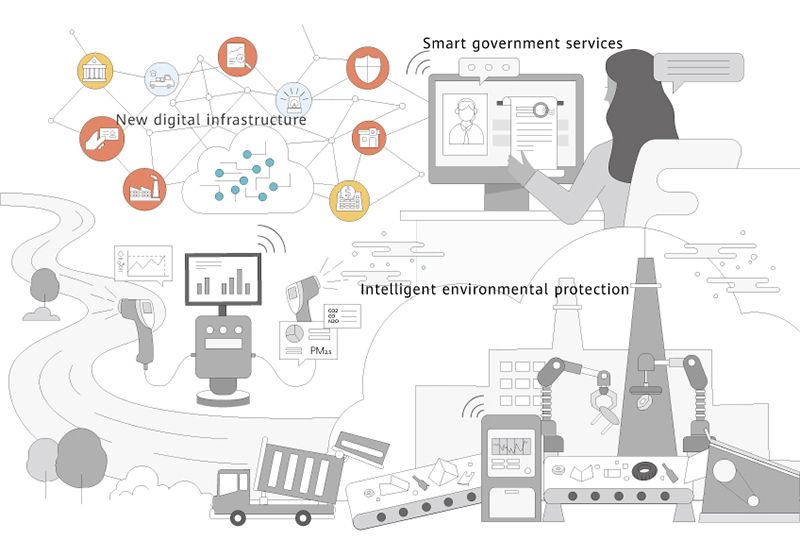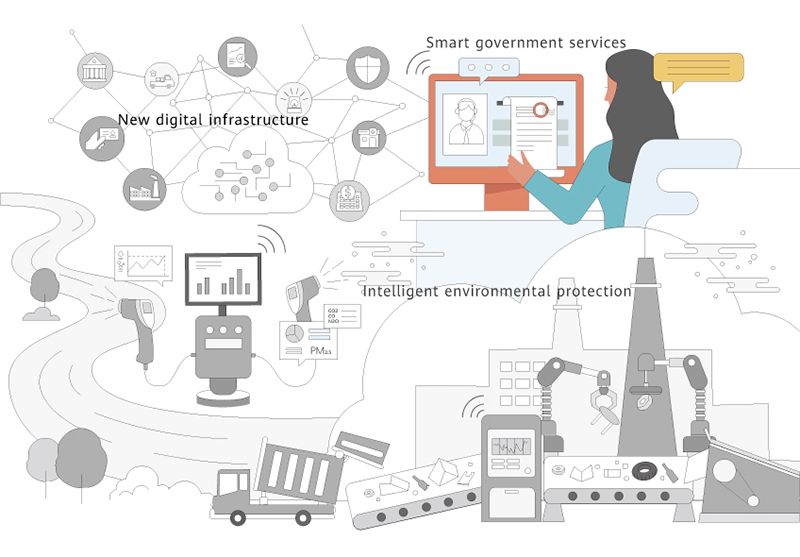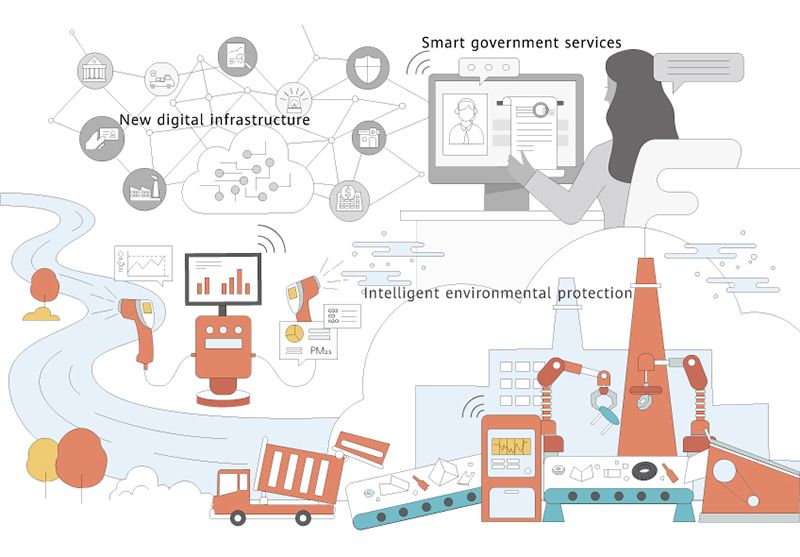New Digital Infrastructure Makes Cities More Human and Livable
Predictions
Directions for Exploration

New digital infrastructure is the engine of digital cities
Snapshot from the future: Intelligent and digital city upgrade underpinned by intelligent computing centers
Snapshot from the future: All-optical, 10-gigabit cities
-
All-optical access: All network connections will be optical, including home, building, enterprise, and 5G base station connections. All-optical transmission networks will be extended into edge environments like large enterprises, buildings, and 5G base stations. 10-gigabit access networks will enable digital transformation across industries, support access to cloud and computing networks within one millisecond, and drive F5G-A application in diverse scenarios as well as 5G adoption in business settings. By 2030, optical transport networks will cover all government agencies, financial institutions, key universities and scientific research institutions, large hospitals, large industrial enterprises, as well as development zones and industrial parks above the county level. -
All-optical anchors: Connections originating in home broadband, enterprise broadband, 5G networks, and data centers will be routed and transmitted through all-optical networks. All-optical anchors will support multiple technologies, enable service-based traffic steering, and provide one-hop connections to cloud and computing networks. By 2030, every 10,000 people will have four all-optical OTN anchors, and 25% of these anchors will deliver 100G services. -
All-optical bearing: Urban optical networks support one-hop access to services. All-optical cross-connect, optical-electrical hybrid automatically switched optical network (ASON), and other technologies will be used to build multi-layer optical networks that support one-hop access to services, highly reliable networking, high-speed inter-cloud transmission, and high synergy between optical and computing networks. More than 50% of data centers will be connected with each other through optical networks, with single-wavelength bandwidth higher than 400 Gbit/s. Mesh fiber networks can deliver 99.9999% reliability thanks to their ability to withstand two or more cut fibers, without services being interrupted. All data center networks will adopt a hybrid optical-electrical design that uses all-optical switching technologies to connect switches and routers within individual data centers. -
Intelligent and automated O&M: Real-time sensing of network status with proactive, preventive O&M will support elastic network resources, and automated service provisioning, resource allocation, and O&M.

Smart government services make cities more human
Snapshot from the future: Proactive, precise, data-based government services
Snapshot from the future: Urban data spaces that promote the circulation and unlock the value of data elements

Intelligent environmental protection for livable cities
Snapshot from the future: Automatic waste disposal for zero waste cities
Snapshot from the future: Optical detection making water sources safer
Snapshot from the future: Real-time AI air quality monitoring
More Outlooks













